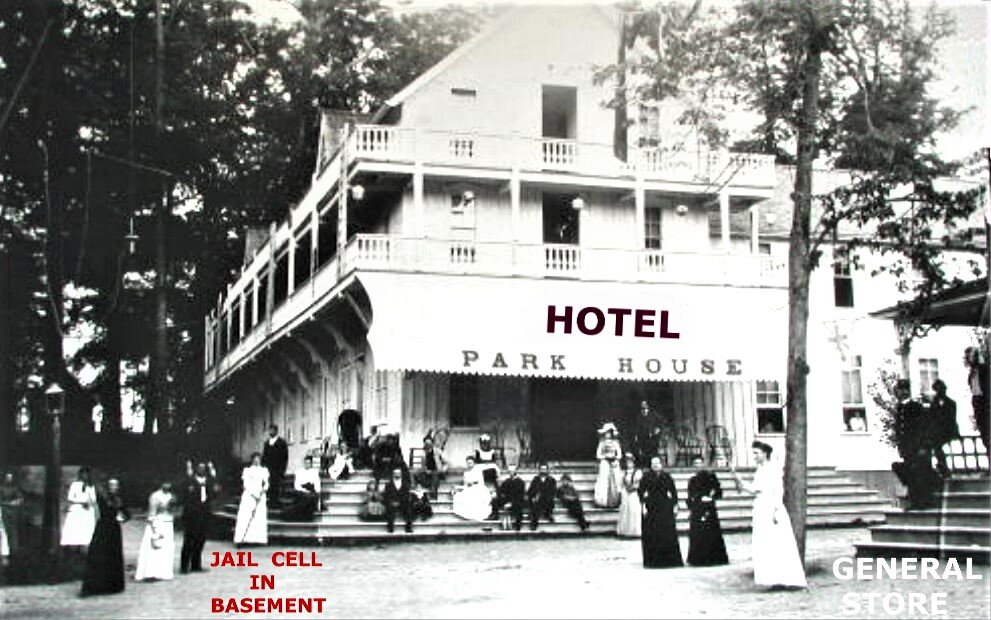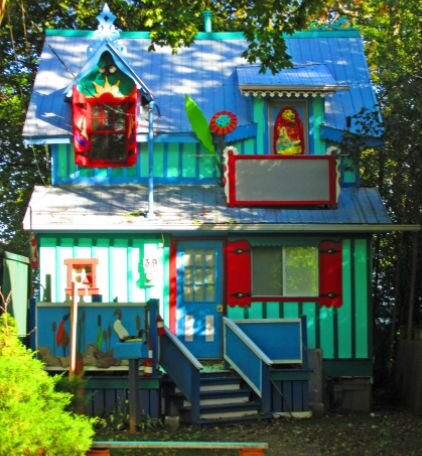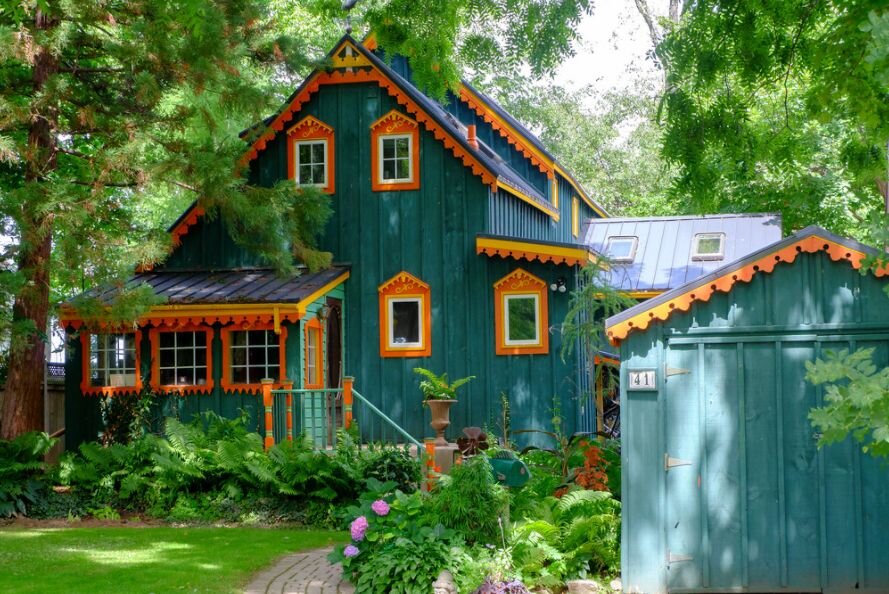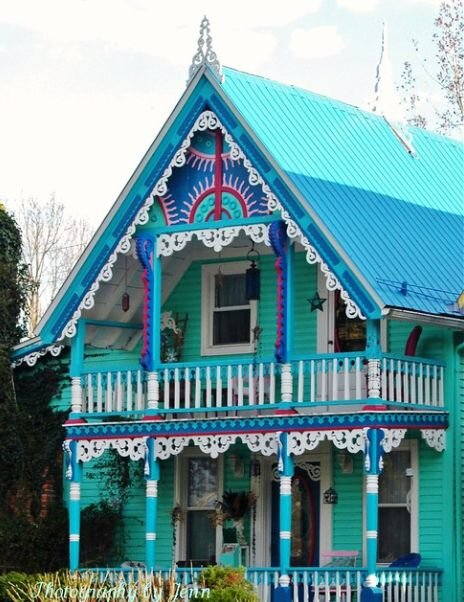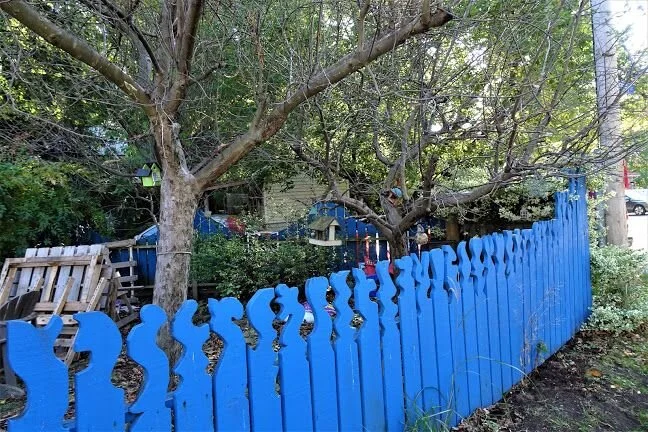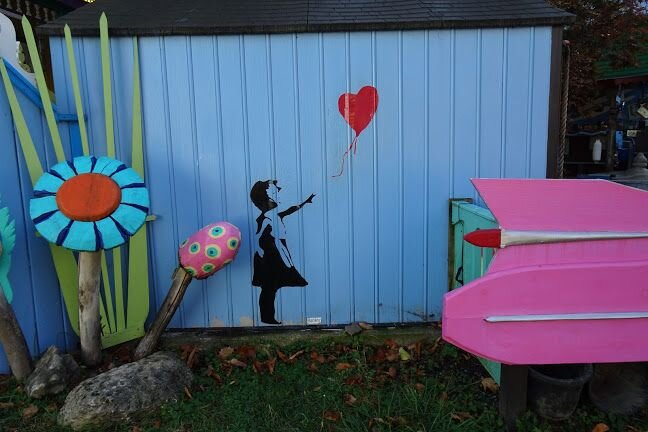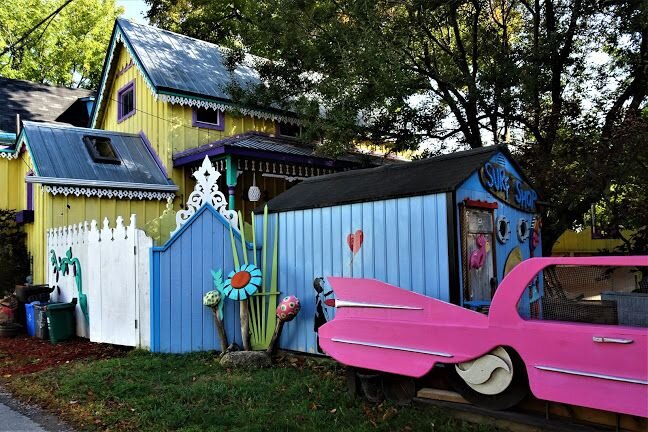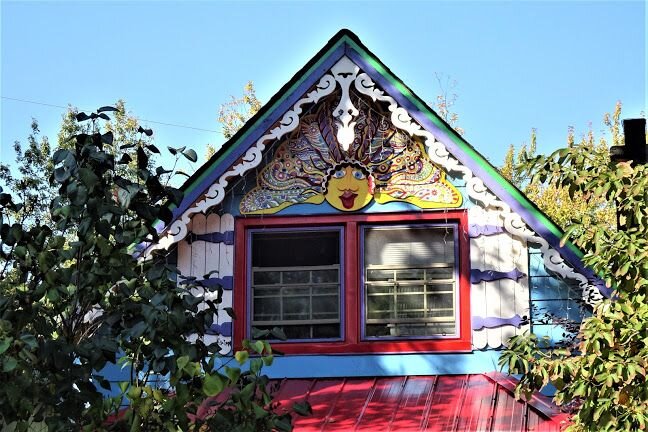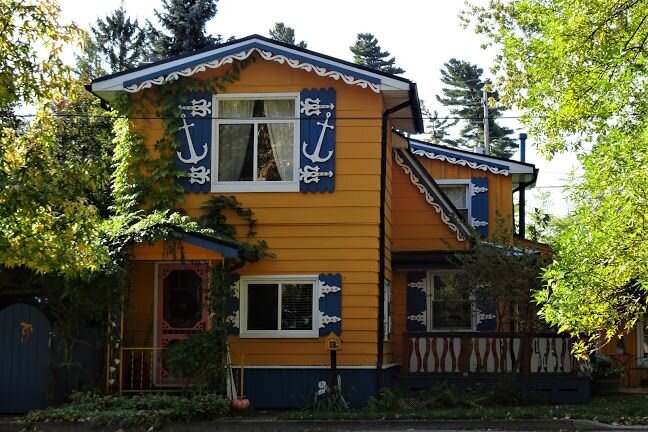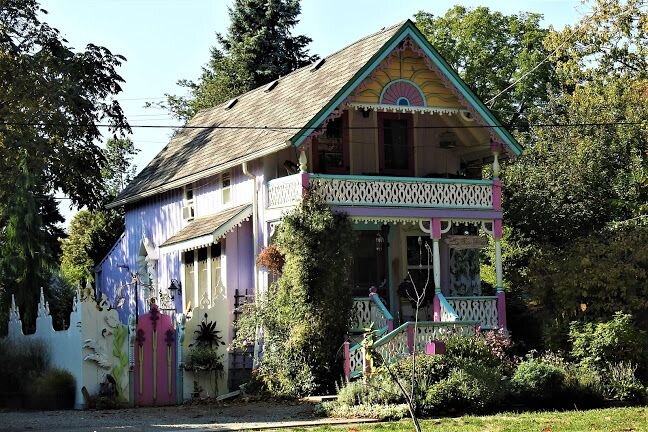Southern Ontario Road Trip: Grimsby Beach's Painted Ladies
I love it when Everyday Tourist readers share photos with me of fun, funky or quirky (FFQ) things in their city or town, or FFQ things they see on their road trips. Recently, Rose Peterson, sent me some photos of a short road trip from her home in Ancaster, Ontario to see the “painted ladies” at Grimsby Beach.
Rose wrote:
My husband and I discovered Grimsby Beach this fall. Due to COVID we have been looking up little known places within a hundred km of our home. This was wonderful. We were given a CD of 2,000 photos including all sorts of documents relating to the history of the place starting with the Native Indians (not sure how to be politically correct, first peoples?) who had a tradition of planting nut trees. They planted 150 species of nut trees on the property that became Grimsby Beach, it was heavily wooded.
John Bowslaugh inherited the land from his wealthy grandfather in the early 1800s, including the cove that was given to the Methodists for use of a church camp. It was at first to be a one off, but soon became permanent.
There is a plaque in one of the two circles, stating the camp was started at this place in 1859. At first it was tents, and then the cottages were built.
The description of a cottage was a two story building with a large porch where people did most of their socializing.
The main floor was a kitchen, living room area and then stairs up to a sloped ceiling room with three single beds.
This was meant to replace a tent. At first these were used for two weeks but then became a permanent summer home for many.
They were strict Methodist rules regarding drinking, quiet time etc. When I was there, I imagined the ladies in their long skirts and gentlemen in top hats.
There are not as many trees now but you certainly got the flavour of the place standing in the circles.
One circle was originally a swampy area that was drained and a little park was built including a 'temple' which was not like what people think of a temple.
They had a bell cast but it was too heavy for the temple so it was placed on the ground. The temple is gone, but the bell remains and the park is called Bell Park.
Over the years more non Methodists came and a ferry took people back and forth from all up and down the coast, mainly from Toronto. Pictures showed how vibrant the pier was at this time. It is all but gone now, just a few large blocks left. The beach area looked like sand in the photos, but it is the usual lake rocks now. Once outsiders started coming changes happened, a large amusement area was added drawing people from all over.
Grimsby Beach Cottages fell in to disuse during the war, and while a few people tried to move back it wasn't until the 1980s did the cottages get a revival. There are several newspaper accounts and YouTube videos showing how this quaint small place was put back with love by the community that has come to live there.
Link: Grimsby Beach Video
Everyday Tourist Was Intrigued
I had never heard Grimsby Beach, which surprised me given I grew up in nearby Hamilton and I’ve always research off-the-beaten path and hidden gems when I return for visits. I am a bit embarrassed I didn’t know about Grimsby’s “Little San Francisco.”
Painted Ladies History
In American architecture, painted ladies are Victorian and Edwardian houses and buildings repainted, starting in the 1960s, in three or more colors that embellish or enhance their architectural details.
The term was first used for San Francisco Victorian houses by writers Elizabeth Pomada and Michael Larsen in their 1978 book Painted Ladies: San Francisco's Resplendent Victorians. Although polychrome decoration was common in the Victorian era, the colors used on these houses are not based on historical precedent.
Since then, the term has also been used to describe groups of colorfully repainted Victorian houses in other American cities, such as the Charles Village neighborhood in Baltimore; Lafayette Square in St. Louis; Columbia-Tusculum in Cincinnati and Old West End in Toledo. (Source Wikipedia)
Grimsby Beach History
In 1846, Methodists living along Ontario’s Niagara Peninsula first started holding an annual 10-day long revival meetings at Grimsby Beach. At first, they just set up tents, but by 1875, they started to construct modest cottages and a 7,000-seat temple was erected in 1888. At the same time, vacationers from Hamilton, Toronto and surrounding region began coming to Grimsby Beach buy train, street car and ferry all summer for a day of picnicking all summer. It became known as Grimsby Beach Chautauqua.
Grimsby Beach kept expanding with hotels, restaurants, gardens and recreation facilities until it faced a crisis in 1909 - the Methodist group managing the park went bankrupt.
The new owner, Harry Wylie from Cleveland, removed the temperance rules and converted it into an amusement park with casino, hotels, Ferris Wheel and rides.
The 1920s saw vacationers starting to go elsewhere and a fire that destroyed 30 cottages. By the early 1930s, a Cottage Association took over the ownership, but the homes gradually fell into a state of disrepair.
Fast forward to 1986. Ed Giernat, an all-round handyman, purchased one of the 150-year old homes and decided to bring the character back by adding gingerbread and other decorative trim moulding and paint his house orange, green, blue and white. Since then, Ed’s vision has spread. Now dozens of “painted ladies” houses create a fun road trip destination, thanks to Ed’s vision and his willingness to help others fix-up their homes.
Everyday Tourist Tip
The rainbow hues of Grimsby’s Painted Ladies are more than just colour, they’re a celebration of community spirit. What if you could fit a bit of Grimsby charm into your pocket?
Design a set of PVC Patches to match the iconic orange facades and recreate the delicate gingerbread decorations that bring the Painted Ladies to life.
Add custom text like ‘My Grimsby Adventure’, or mark the beach with a map pin or a little ferry. Mix and match them on your jacket to create a wearable collage of this unique destination.
Last Word
Every city likely has a few painted ladies. I know Calgary has a few. But I have never seen anything like Grimsby Beach in all my travels. Yes I did see San Francisco’s painted ladies along Steiner Street and some in Haight-Ashbury, but they pale in comparison to homes and fences in Rose’s photos and those I have found while researching its history.
Grimsby Beach is a “must see” when I am next in Southern Ontario.
If you like this blog, you will like these links:
Postcards from Buffalo The Bold!
Too Much Fun: Teapot to Hippos!
Winnipeg: Salisbury House: Restaurant & Museum
awfasdfaf









